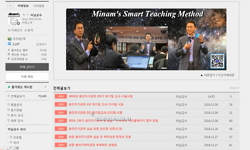Purpose: To evaluate the questions of hand and wrist section of Korean orthopedic in-training examination (KOITE). Methods: We analyzed questions of hand and wrist section of KOITE between 2010 and 2014. The weight of hand and wrist section was calcul...
http://chineseinput.net/에서 pinyin(병음)방식으로 중국어를 변환할 수 있습니다.
변환된 중국어를 복사하여 사용하시면 됩니다.
- 中文 을 입력하시려면 zhongwen을 입력하시고 space를누르시면됩니다.
- 北京 을 입력하시려면 beijing을 입력하시고 space를 누르시면 됩니다.

대한민국 정형외과 전공의 평가시험 분석: 수부 및완관절 분야 = Analysis of Korean Orthopedic In-Training Examination: The Hand and Wrist Section
한글로보기부가정보
다국어 초록 (Multilingual Abstract)
Methods: We analyzed questions of hand and wrist section of KOITE between 2010 and 2014. The weight of hand and wrist section was calculated and topics were thoroughly analyzed. The construct of questions were evaluated and taxonomic classifications were also performed. The frequency of presentations of physical examinations and radiologic evaluations in diagnosis and treatment related questions were analyzed. The coverage of available references which were recommended by Korean Orthopedic Association (KOA) were analyzed.
Results: Sixty one out of 500 questions (weight: 12.2%) were related with hand and wrist section. Disease (30/61, 48.2%) was more commonly asked than trauma, however most frequently asked topic with a broad classification was fractures and dislocations (19/61, 31.1%). The description only questions (46/61, 75.4%) were most commonly asked construct of question. According to taxonomic classification, taxonomy B (diagnosis; 27/61, 44.3%) was most frequently asked. The Campbell’s operative orthopedics (54/61, 88.5%) and textbook of KOA (53/61, 86.9%) were representative references covering questions most widely.
Conclusion: This analysis of hand and wrist section of KOITE could be used as the check-up tools for resident training programs of each training hospitals.
Purpose: To evaluate the questions of hand and wrist section of Korean orthopedic in-training examination (KOITE).
Methods: We analyzed questions of hand and wrist section of KOITE between 2010 and 2014. The weight of hand and wrist section was calculated and topics were thoroughly analyzed. The construct of questions were evaluated and taxonomic classifications were also performed. The frequency of presentations of physical examinations and radiologic evaluations in diagnosis and treatment related questions were analyzed. The coverage of available references which were recommended by Korean Orthopedic Association (KOA) were analyzed.
Results: Sixty one out of 500 questions (weight: 12.2%) were related with hand and wrist section. Disease (30/61, 48.2%) was more commonly asked than trauma, however most frequently asked topic with a broad classification was fractures and dislocations (19/61, 31.1%). The description only questions (46/61, 75.4%) were most commonly asked construct of question. According to taxonomic classification, taxonomy B (diagnosis; 27/61, 44.3%) was most frequently asked. The Campbell’s operative orthopedics (54/61, 88.5%) and textbook of KOA (53/61, 86.9%) were representative references covering questions most widely.
Conclusion: This analysis of hand and wrist section of KOITE could be used as the check-up tools for resident training programs of each training hospitals.
국문 초록 (Abstract)
방법: 2010년에서 2014년까지 5년간 치러진 정형외과 전공의 평가시험 문항 중 수부 및 완관절 관련 문항들을 분석하였다. 수부와 완관절 영역이 차지하는 비중과, 문제 주제, 출제 형태 및 유형에 따른 분류 등의 분석을 시행하였다. 또한정형외과 참고서적 및 문헌들의 가용 정도를 조사하였다.
결과: 수부 및 완관절 관련문항은 총 500문항 중, 61문항(12.2%)이었으며 대분류에서 질환 문제(30/61, 48.2%)가, 주제분류(광범위)로 골절 및 탈구 문항이(19/61, 31.1%) 출제 빈도가 높았다. 출제 형태는 단순 서술형 문제(46/61, 75.4%), 출제 유형에선 진단관련 문항(27/61, 44.3%)이 가장 빈번하였다. 참고서적으로 캠벨의 수술적 정형외과학(54/61, 88.5%)과 대한 정형외과학 교과서(53/61, 86.9%)가 광범위하게 이용되었다.
결론: 이번 수부 및 완관절 영역 전공의 평가시험 분석은 현재 수부 및 완관절 분야의 교육 프로그램의 적절성을 검토할만한 근거 자료가 될 수 있겠다.
목적: 본 연구에서는 정형외과 전공의 평가시험 중 수부 및 완관절 분야를 분석하여 평가시험의 출제 경향과 문제점을논의 하고자 한다. 방법: 2010년에서 2014년까지 5년간 치러진 정형외과 ...
목적: 본 연구에서는 정형외과 전공의 평가시험 중 수부 및 완관절 분야를 분석하여 평가시험의 출제 경향과 문제점을논의 하고자 한다.
방법: 2010년에서 2014년까지 5년간 치러진 정형외과 전공의 평가시험 문항 중 수부 및 완관절 관련 문항들을 분석하였다. 수부와 완관절 영역이 차지하는 비중과, 문제 주제, 출제 형태 및 유형에 따른 분류 등의 분석을 시행하였다. 또한정형외과 참고서적 및 문헌들의 가용 정도를 조사하였다.
결과: 수부 및 완관절 관련문항은 총 500문항 중, 61문항(12.2%)이었으며 대분류에서 질환 문제(30/61, 48.2%)가, 주제분류(광범위)로 골절 및 탈구 문항이(19/61, 31.1%) 출제 빈도가 높았다. 출제 형태는 단순 서술형 문제(46/61, 75.4%), 출제 유형에선 진단관련 문항(27/61, 44.3%)이 가장 빈번하였다. 참고서적으로 캠벨의 수술적 정형외과학(54/61, 88.5%)과 대한 정형외과학 교과서(53/61, 86.9%)가 광범위하게 이용되었다.
결론: 이번 수부 및 완관절 영역 전공의 평가시험 분석은 현재 수부 및 완관절 분야의 교육 프로그램의 적절성을 검토할만한 근거 자료가 될 수 있겠다.
참고문헌 (Reference)
1 Cheriyan T, "Velocity drop in anconeus epitrochlearis-associated cubital tunnel syndrome" 43 : 227-229, 2014
2 Campbell WW, "Variations in anatomy of the ulnar nerve at the cubital tunnel : pitfalls in the diagnosis of ulnar neuropathy at the elbow" 14 : 733-738, 1991
3 Byun SD, "Ulnar neuropathy caused by an anconeus epitrochlearis : clinical and electrophysiological findings" 36 : 607-608, 2011
4 Nellans K, "Ulnar neuropathy as a result of anconeus epitrochlearis" 37 : e743-e745, 2014
5 Hsu RW, "Ulnar nerve palsy due to concomitant compression by the anconeus epitrochlearis muscle and a ganglion cyst" 27 : 227-228, 2004
6 Tiong WH, "Ulnar nerve entrapment by anconeus epitrochlearis ligament" 17 : 83-84, 2012
7 Gessini L, "Ulnar nerve entrapment at the elbow by persistent epitrochleoanconeus muscle : case report" 55 : 830-831, 1981
8 Uscetin I, "Ulnar nerve compression at the elbow caused by the epitrochleoanconeus muscle : a case report and surgical approach" 24 : 266-271, 2014
9 O’Hara JJ, "Ulnar nerve compression at the elbow caused by a prominent medial head of the triceps and an anconeus epitrochlearis muscle" 21 : 133-135, 1996
10 Masear VR, "Ulnar compression neuropathy secondary to the anconeus epitrochlearis muscle" 13 : 720-724, 1988
1 Cheriyan T, "Velocity drop in anconeus epitrochlearis-associated cubital tunnel syndrome" 43 : 227-229, 2014
2 Campbell WW, "Variations in anatomy of the ulnar nerve at the cubital tunnel : pitfalls in the diagnosis of ulnar neuropathy at the elbow" 14 : 733-738, 1991
3 Byun SD, "Ulnar neuropathy caused by an anconeus epitrochlearis : clinical and electrophysiological findings" 36 : 607-608, 2011
4 Nellans K, "Ulnar neuropathy as a result of anconeus epitrochlearis" 37 : e743-e745, 2014
5 Hsu RW, "Ulnar nerve palsy due to concomitant compression by the anconeus epitrochlearis muscle and a ganglion cyst" 27 : 227-228, 2004
6 Tiong WH, "Ulnar nerve entrapment by anconeus epitrochlearis ligament" 17 : 83-84, 2012
7 Gessini L, "Ulnar nerve entrapment at the elbow by persistent epitrochleoanconeus muscle : case report" 55 : 830-831, 1981
8 Uscetin I, "Ulnar nerve compression at the elbow caused by the epitrochleoanconeus muscle : a case report and surgical approach" 24 : 266-271, 2014
9 O’Hara JJ, "Ulnar nerve compression at the elbow caused by a prominent medial head of the triceps and an anconeus epitrochlearis muscle" 21 : 133-135, 1996
10 Masear VR, "Ulnar compression neuropathy secondary to the anconeus epitrochlearis muscle" 13 : 720-724, 1988
11 Guidicelli T, "Two anomalous muscles of a forearm revealed by ulnar nerve compressions, a Double Crush syndrome" 59 : 208-211, 2014
12 O’Driscoll SW, "The cubital tunnel and ulnar neuropathy" 73 : 613-617, 1991
13 Gervasio O, "Surgical approach to ulnar nerve compression at the elbow caused by the epitrochleoanconeus muscle and a prominent medial head of the triceps" 62 : 186-192, 2008
14 Boero S, "Pediatric cubital tunnel syndrome by anconeus epitrochlearis: a case report" 18 : e21-e23, 2009
15 Dellon AL, "Musculotendinous variations about the medial humeral epicondyle" 11 : 175-181, 1986
16 Jeon IH, "MR imaging of edematous anconeus epitrochlearis: another cause of medial elbow pain?" 34 : 103-107, 2005
17 Capdarest-Arest N, "Hypotheses for ongoing evolution of muscles of the upper extremity" 82 : 452-456, 2014
18 Yalcin E, "Hypertrophic ancenous epitrochlearis muscle as a cause of ulnar neuropathy at elbow" 26 : 155-157, 2013
19 Girtler MT, "Feasibility of 3D ultrasound to evaluate upper extremity nerves" 34 : 382-387, 2013
20 Hirasawa Y, "Entrapment neuropathy due to bilateral epitrochleoanconeus muscles : a case report" 4 : 181-184, 1979
21 Husarik DB, "Elbow nerves : MR findings in 60 asymptomatic subjects : normal anatomy, variants, and pitfalls" 252 : 148-156, 2009
22 Assmus H, "Cubital tunnel syndrome : a review and management guidelines" 72 : 90-98, 2011
23 Babusiaux D, "Contribution of static and dynamic ultrasound in cubital tunnel syndrome" 100 : S209-S212, 2014
24 Dekelver I, "Bilateral ulnar nerve entrapment by the M. anconeus epitrochlearis:a case report and literature review" 31 : 1139-1142, 2012
25 Kleinman WB, "Anterior intramuscular transposition of the ulnar nerve" 14 : 972-979, 1989
26 Dahners LE, "Anconeus epitrochlearis, a rare cause of cubital tunnel syndrome : a case report" 9 : 579-580, 1984
27 Morgenstein A, "Anconeus epitrochlearis muscle causing dynamic cubital tunnel syndrome : a case series" 41 : 227-229, 2016
28 Li X, "Anconeus epitrochlearis as a source of medial elbow pain in baseball pitchers" 35 : e1129-e1132, 2012
29 Mirza A, "An anatomical basis for endoscopic cubital tunnel release and associated clinical outcomes" 39 : 1363-1369, 2014
동일학술지(권/호) 다른 논문
-
- 대한수부외과학회
- 윤민근
- 2016
- KCI등재
-
- 대한수부외과학회
- 김재현
- 2016
- KCI등재
-
Hand Injury Patterns Caused by Different Electric Saws in South Korea
- 대한수부외과학회
- 최웅규
- 2016
- KCI등재
-
Synovial Chondromatosis of the Ulnocarpal Joint
- 대한수부외과학회
- 김성국
- 2016
- KCI등재
분석정보
인용정보 인용지수 설명보기
학술지 이력
| 연월일 | 이력구분 | 이력상세 | 등재구분 |
|---|---|---|---|
| 2028 | 평가예정 | 재인증평가 신청대상 (재인증) | |
| 2022-01-01 | 평가 | 등재학술지 유지 (재인증) |  |
| 2019-01-01 | 평가 | 등재학술지 유지 (계속평가) |  |
| 2018-02-28 | 학술지명변경 | 한글명 : 대한수부외과학회 학회지 -> Archives of Hand and Microsurgery 외국어명 : The Journal of the Korean society for Surgery of the Hand -> Archives of Hand and Microsurgery |  |
| 2018-01-12 | 통합 |  |
|
| 2015-01-01 | 평가 | 등재학술지 선정 (계속평가) |  |
| 2013-01-01 | 평가 | 등재후보학술지 유지 (기타) |  |
| 2011-01-01 | 평가 | 등재후보학술지 선정 (신규평가) |  |
학술지 인용정보
| 기준연도 | WOS-KCI 통합IF(2년) | KCIF(2년) | KCIF(3년) |
|---|---|---|---|
| 2016 | 0.02 | 0.02 | 0.01 |
| KCIF(4년) | KCIF(5년) | 중심성지수(3년) | 즉시성지수 |
| 0.02 | 0.02 | 0.189 | 0.03 |




 KCI
KCI






